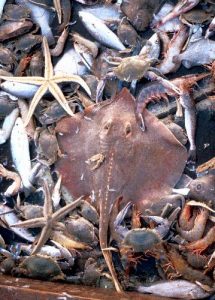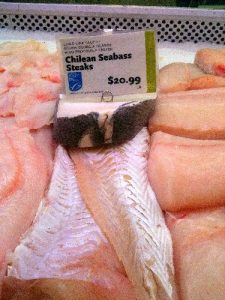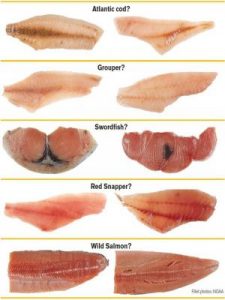Investigating the vulnerability of European Seafood Production to Climate Warming
By: Gaitlyn Malone, SRC Intern
As the world’s climate continues to change, economic, social, and environmental changes will undoubtedly occur along with it. One sector that is expected to be economically affected by climate warming is seafood production (Breitburg et al., 2018). Seafood production, which includes both farmed and captured fish, shellfish, and seaweed in marine and freshwater, will experience changes since the warming of an environment has the ability to change both a species’ distribution and life history characteristics (Pecl et al., 2017; Cochrane et al., 2009). Therefore, it is crucial to work towards being able to predict and understand the extent of these changes in order to prepare for the future.
A recent study (Blanchet et al., 2019) examined the effects of climate change on seafood production within each European country in order to identify potential challenges and opportunities within the sectors of marine fisheries, marine aquaculture, and freshwater production. To do so, the researchers combined information on the target species’ temperature preferences, life history characteristics, and production volume to determine their biological sensitivity (BS) and the maximum temperature (Tmax) that they were experiencing. They then determined the adaptive ability of seafood production in each country or sector by determining the number of species that the country/sector exploits and those species’ temperature ranges. A country or sector that exploits a higher number of species will be more likely to adapt in response to climate change. A species with a wide temperature range would also potentially be more adaptable since they are able to withstand a variety of temperatures.

Figure 1: Biological sensitivity index versus the temperature range of each species within the sectors of a) marine fisheries, b) marine aquaculture, and c) freshwater production. The size of the bubbles relates to the total volume produced for each particular species in that sector (Blanchet et al., 2019).

Figure 2: Ranking of each European country’s vulnerability to warming based on their weighted temperature sensitivity and weighted biological sensitivity for each of the three production sectors. The size of the bubbles represents the relative contribution of each country to the total European production volume within that sector (Blanchet et al., 2019).
Overall, seafood production was found to generally be more vulnerable within the marine fisheries and aquaculture sectors. The freshwater sector varied greatly based on country. Within the marine sector, northern countries tended to be more sensitive to warming than southern countries since seafood production in these areas are more dependent on cold-water species with a high BS. Southern countries tended to rely on warmer water species that had a lower BS. The main challenge facing these marine fisheries is due to changes in species distribution. In response to warming, there has been a northward expansion of the range of several species, which in some cases has included a contraction of their southern range. This change in distribution has the ability to affect local fisheries and management, who in southern areas may lose access to their resources, while northern areas may benefit. Aquaculture taking place in temperate zones was also predicted to be at risk from warming conditions, since increasing temperatures have the ability to reduce oxygen levels in the water and increase the metabolic costs for organisms. Disease is also likely to increase in these systems since pathogens may spread more readily. The low amount of species diversity in aquaculture also makes it particularly susceptible to rising temperatures.
Under warming conditions is not impossible to continue producing sustainable seafood, however efforts must be made to adapt to climate change. Therefore, the authors suggest that there must be communication between stakeholders, diversification of exploited species, and transnational cooperation in order to meet these goals.
Work Cited
Blanchet, M.-A., Primicerio, R., Smalas, A., Arias-Hansen, J., Aschan, M. 2019. How vulnerable is the European seafood production to climate warming?. Fisheries Research 209, 251-258.
Breitburg, D., Levin, L.A., Oschlies, A., Gr.goire, M., Chavez, F.P., Conley, D.J., Gar.on, V., et al., 2018. Declining oxygen in the Global Ocean and coastal waters. Science 359 (6371).
Cochrane, K., Young, D.C., Soto, D., Bahri, T., 2009. Climate change implications for fisheries and aquaculture: overview of current scientific knowledge. FAO Fisheries and Aquaculture Technical Paper 530, 212.
Pecl, G.T., Ara.jo, M.B., Bell, J.D., Blanchard, J., Bonebrake, T.C., Chen, I.-C., Clark, T.D., et al., 2017. Biodiversity redistribution under climate change: impacts on ecosystems and human well-being. Science 355.





